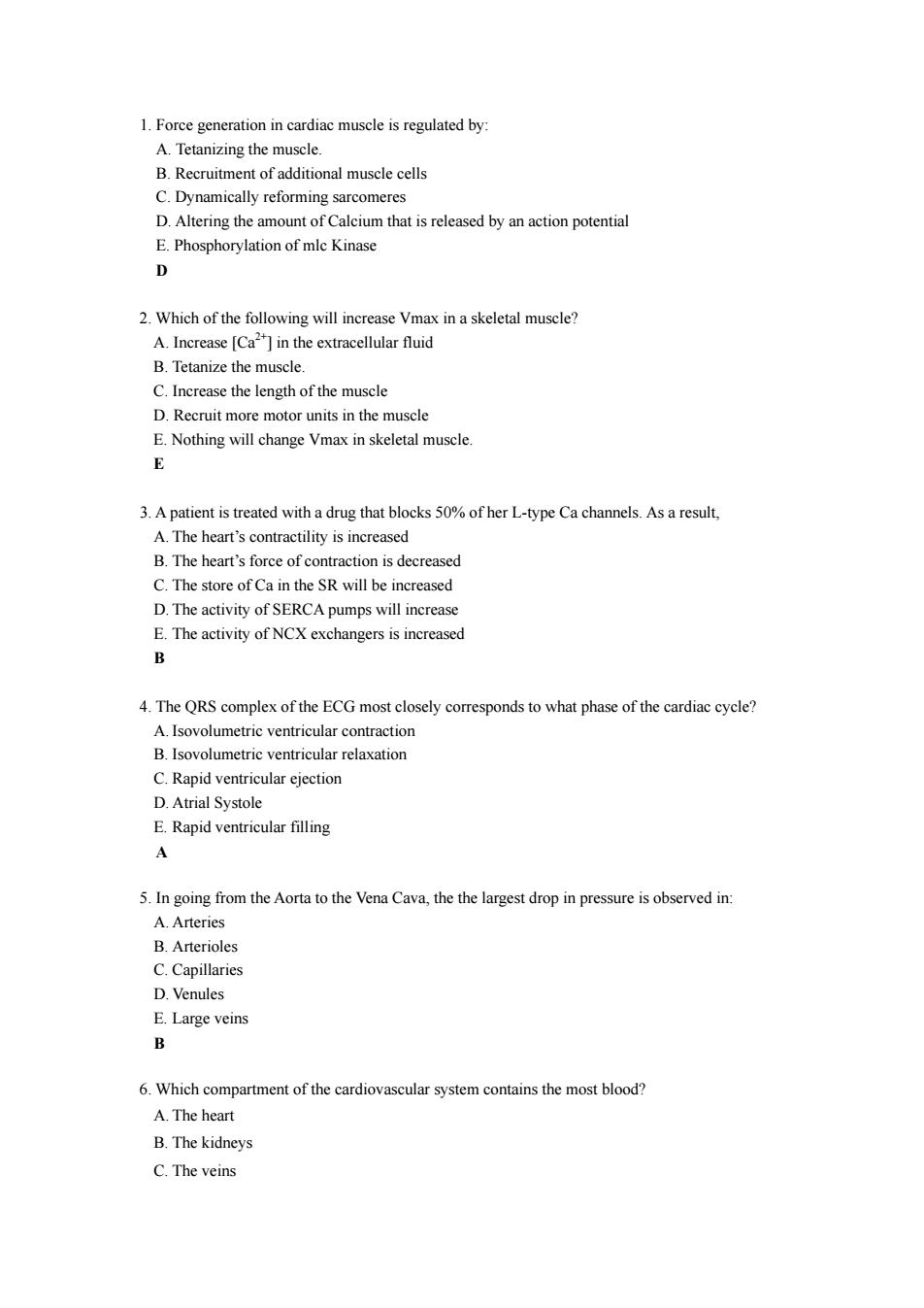正在加载图片...

1.Force generation in cardiac muscle is regulated by A.Tetanizing the muscle. B.Recruitment of additional muscle cel C.Dynamically reforming sarcomeres D.Altering the amount of Calcium that is released by an action potential E.Phosphorylation of mlc Kinase D 2.Which of the following will increase Vmax ina skeletal muscle? A.Increase [Ca]in the extracellular fluid B.Tetanize the muscle. C.Increase the length of the muscle D.Recruit morer muscle E.Nothing will change Vmax in skeletal muscle 3.A patient is treated with a drug that blocks 50%of her L-type Ca channels.As a result, A.The heart's contractility is increased B.The heart's fo rce C.The store of Ca in the SR will be increased D.The activity of SERCA pumps will increase E.The activity of NCX exchangers is increased B 4.The QRS complex of the ECG most closely corresponds to what phase of the cardiac cycle? A.Isovolumetric ventricular contraction B.Isovolumetric ventricular relaxation C.Rapid ventricular ejection D.Atrial Systole A 5.In going from the Aorta to the Vena Cava,the the largest drop in pressure is observed in: A.Arteries B.Arterioles D.Venules E.Large veins B 6.Which compartment of the cardiovascular system contains the most blood? A.The heart B.The kidneys C.The veins1. Force generation in cardiac muscle is regulated by: A. Tetanizing the muscle. B. Recruitment of additional muscle cells C. Dynamically reforming sarcomeres D. Altering the amount of Calcium that is released by an action potential E. Phosphorylation of mlc Kinase D 2. Which of the following will increase Vmax in a skeletal muscle? A. Increase [Ca2+] in the extracellular fluid B. Tetanize the muscle. C. Increase the length of the muscle D. Recruit more motor units in the muscle E. Nothing will change Vmax in skeletal muscle. E 3. A patient is treated with a drug that blocks 50% of her L-type Ca channels. As a result, A. The heart’s contractility is increased B. The heart’s force of contraction is decreased C. The store of Ca in the SR will be increased D. The activity of SERCA pumps will increase E. The activity of NCX exchangers is increased B 4. The QRS complex of the ECG most closely corresponds to what phase of the cardiac cycle? A. Isovolumetric ventricular contraction B. Isovolumetric ventricular relaxation C. Rapid ventricular ejection D. Atrial Systole E. Rapid ventricular filling A 5. In going from the Aorta to the Vena Cava, the the largest drop in pressure is observed in: A. Arteries B. Arterioles C. Capillaries D. Venules E. Large veins B 6. Which compartment of the cardiovascular system contains the most blood? A. The heart B. The kidneys C. The veins